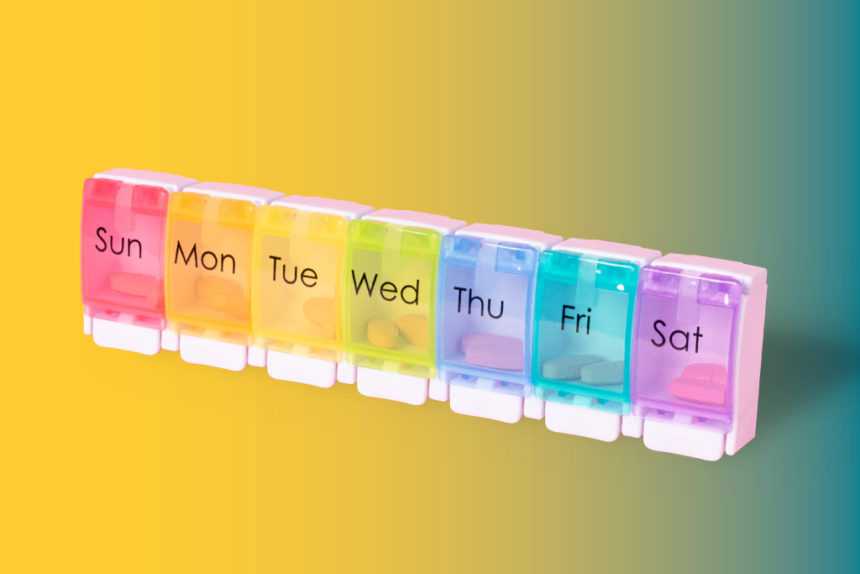You may be of the opinion that we’re either AC (after COVID) or DC (during COVID), but the industry’s media spend patterns suggest we’re somewhere in between.
The meteoric digital media buys seen by pharma and healthcare brands during the first year of the COVID-19 pandemic are a thing of the past, an Insider Intelligence report predicts, but outlays into channels like search and display are still historically strong.
In 2020, those brands reached peak digital spend, “over-indexing” the greater market’s digital ad spending growth. If the forecast pans out, the industry will no longer be shelling out off-the-charts amounts in order to reach providers and consumers online, as classic detailing mounts a comeback and brands find ways to get more bang for their advertising buck.
The growth rate in this sector’s digital ad spend has slowed since the first year of the pandemic, according to the report, when it increased a whopping 27.6% to nearly $11 billion, accounting for 7.2% of all U.S. digital advertising. That was followed up by last year’s 26.2% spike, reaching $13.9 billion.
However, this year’s growth hike is projected to be a much-lower 14.3% for almost $16 billion, followed by 12.3% growth to reach $17.8 billion in 2023 and 10.5% growth to hit $19.7 billion in 2024.
Kimberly Coleman Clotman, head of U.S. marketing for Nabriva Therapeutics, said one reason for the slowdown is the fact that, as the coronavirus becomes more endemic, many doctors are opening up to meeting with drug reps again in-person.
“There’s still a bias, especially when it relates to HCPs, that in-person, face-to-face interactions are what drive prescription growth – or drives prescribing for pick-a-therapeutic-entity,” Coleman Clotman noted. “But what’s changed is the recognition that there’s an even greater importance for digital as a complement to that.”
Drug and device makers’ provider-engagement challenges in 2020 and 2021 were well-documented, as was the trend of consumers going online for information, especially related to COVID. The rise of virtual meetings and other media made sense over the past two years.
Now, pharma marketers like Coleman Clotman see the industry reverting to its bedrock marketing tactic, but not all the way, as the digital ad spend numbers are projected to increase in absolute dollars.
“Not every office is fully willing to engage with reps,” said Coleman Clotman. “Many still have restrictions on how often reps can get in front of providers. But because reach, frequency and awareness are still the core objectives of pretty much any marketing initiative, if you’re not able to see providers to the same extent as you were pre-pandemic to detail them, then digital as a supplement to those interactions does help.”
Indeed, healthcare/pharma’s B2B digital ad spend is also set to move higher in coming years, albeit at a much slower pace than the jumps of 46.2% and 30% that Insider Intelligence recorded in 2020 and 2021, respectively. Digital B2B advertising will ramp up 17% this year to $1.4 billion, per the forecast, followed by increases of 13.6% in 2023 and 13% in 2024.
As to other factors contributing to the digital cool-down, Steve Andrzejewski, who until recently was VP of marketing at Amarin Pharma and is now a strategic consultant with Indegene said that he hopes companies are “learning how they can be more efficient with the use of their digital advertising dollars, as well.”
“The double-digit growth is still there, but [advertisers] are looking for ways to make that more efficient,” said Andrzejewski. “Just throwing a bunch of banner ads up to get a positive result – awareness or prescription – is a bit more challenging.” This dynamic is occurring as doctors get bombarded by nearly every prescription drug with a promotional budget, he added.
“Companies are taking more of an AI-driven approach to finding out individually what doctors may respond to different digital tools; be it a video, active participation in a webinar or emails from a rep, if there’s a pre-existing relationship,” he added. “Learning what leads to an engagement and then coming up with formulas to make that spend more efficient is where things are going over time.”
TV, which has historically been another comfortable place for pharma brands to park their media dollars, is also giving way as consumers view more healthcare and pharma ads on connected-TV (CTV) screens and on desktop/laptop devices. That means the vertical’s mobile and nonmobile ad spending is slowing down.
Still, search and display ads comprise almost 99% of this vertical’s digital spending in 2022 and will continue to dominate, per Insider Intelligence. Search remains the “most important component” of a digital strategy for health/pharma marketers, the report notes, but will dip slightly from 57.2% of brands’ digital ad spend this year to 55.6% by 2024.
Display ads, on the other hand, will account for more of the marketing budget, increasing from a 41.6% share this year to a 43.4% share by 2024, as more emphasis is placed on patient engagement. The majority of that will go toward video, which Insider Intelligence classifies as a subcategory of display. The forecast predicts video will go from 56% of display budgets in 2022 to 60.6% in 2024.
As the focus turns to using digital tools to engage doctors and patients, often in a hybrid fashion, linear TV and sales reps continue to be mainstays in the marketing toolbox. For one, they’re more measurable.
“It’s easy to have a quantifiable metric in terms of, ‘Rep goes into office A, and office A writes a script of product X,’” Coleman Clotman explained. “It’s harder to attribute the same dynamic in office A if you’re only doing virtual. Also, if you’re doing virtual plus in-person, how much does the complement of virtual interactions help to drive TRx’s?”
While the industry may be reverting to what it knows best, the pendulum isn’t swinging that way completely.
“There’s been a reprioritization of digital advertising as a part of the marketing mix that supports in-person interactions,” she said.







